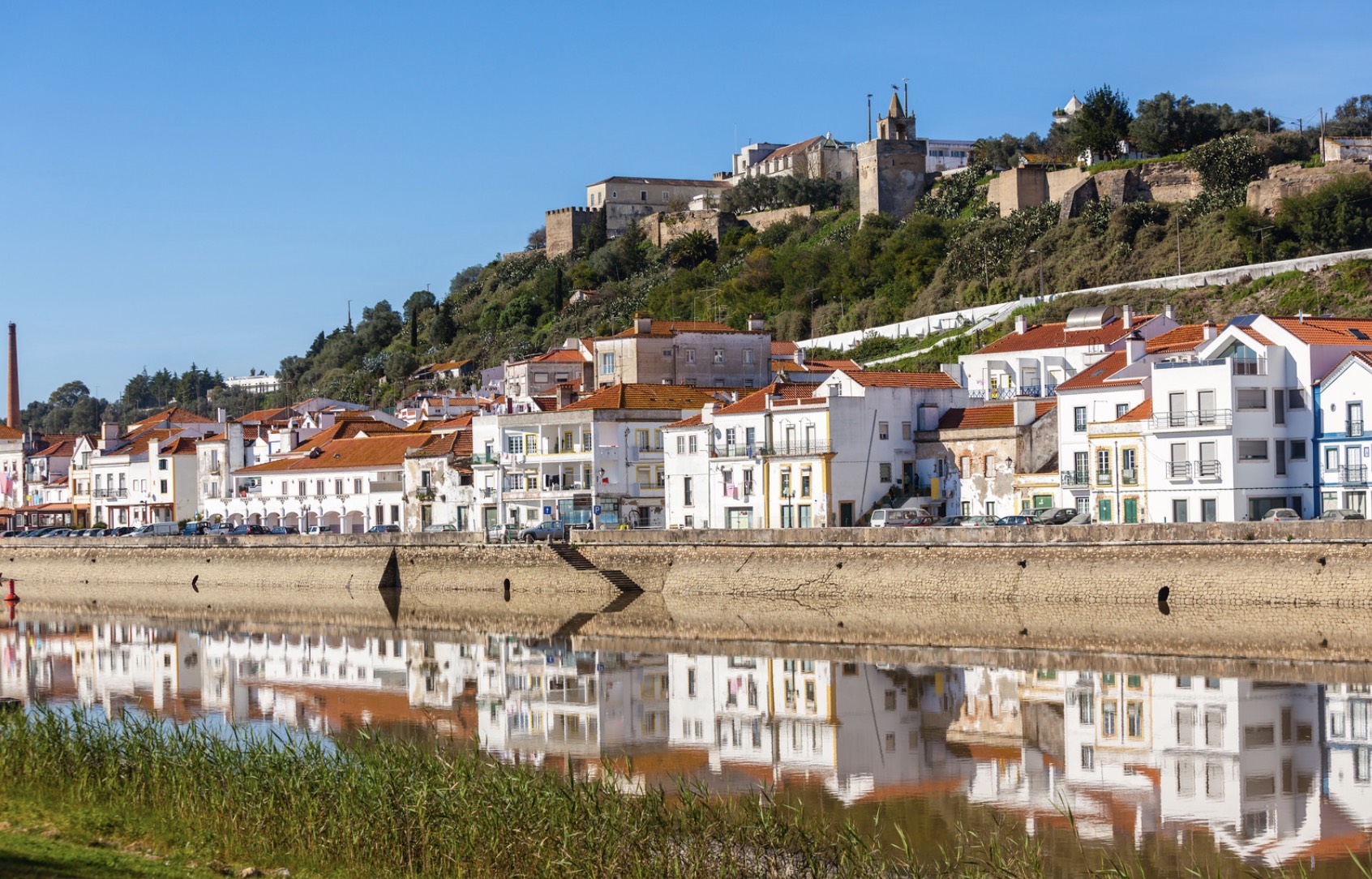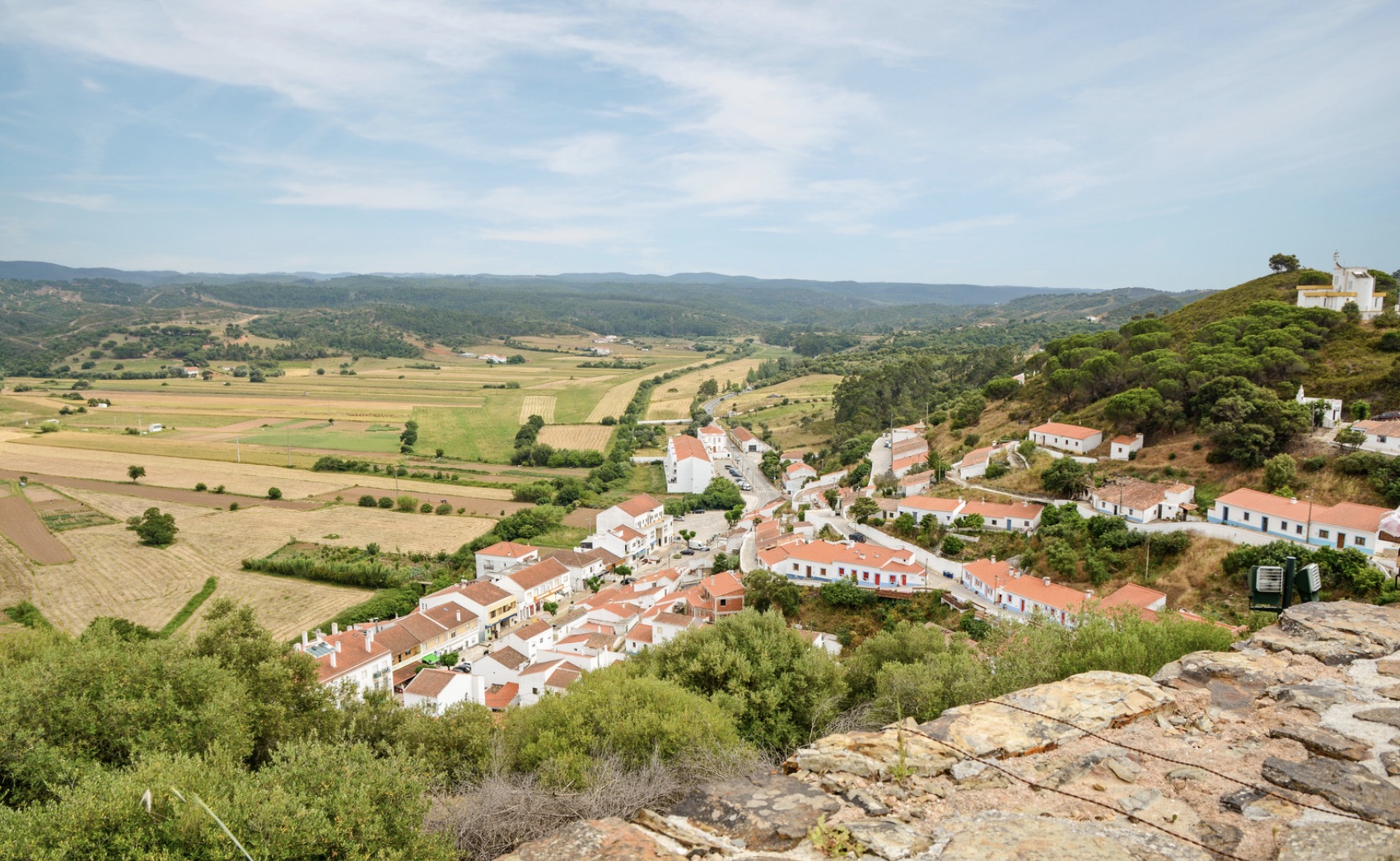PLACES WORTH VISITING AROUND SETÚBAL CITY
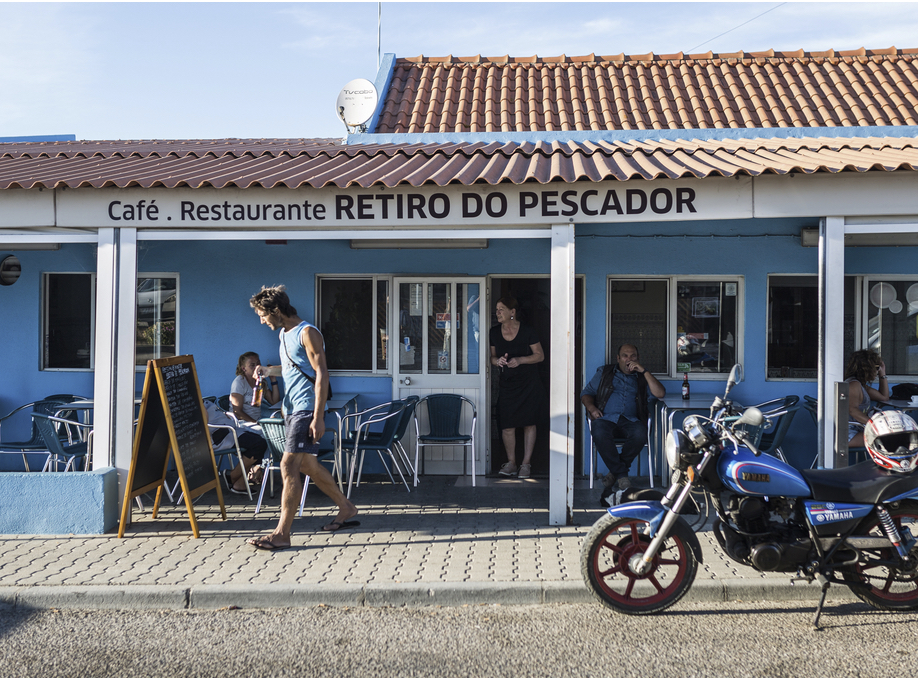
Best beaches near Setúbal
Let’s not kid ourselves: nature and in particular, the coastline, are one of the biggest selling points of the Setúbal region. Praia de Galapinhos was literally considered the “best beach in Europe ” in 2017 by European Best Destinations. Another beach, Praia da Figueirinha, is one of the most sought after by locals and, to avoid traffic and pollution in this protected natural area, there are special buses running from downtown Setúbal to these white sand beaches during the summer month, and traffic is heavily restricted.
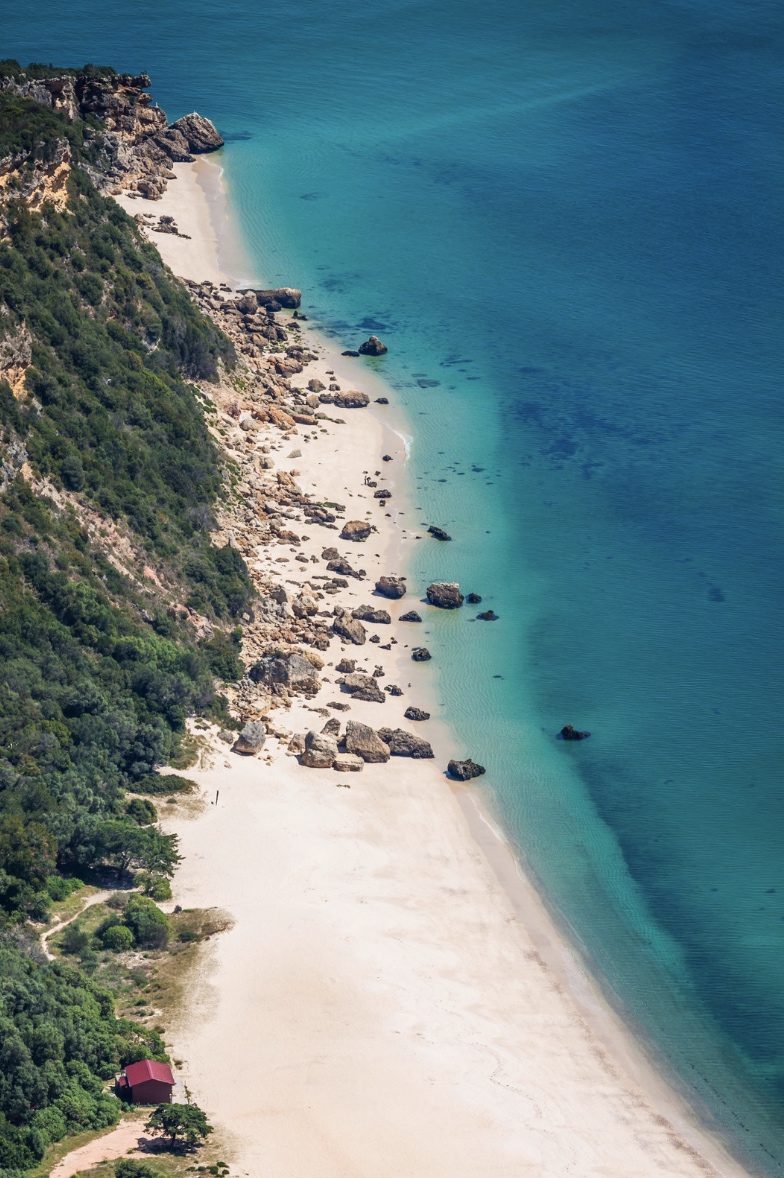
Arrábida beach
Creiro (also known as Portinho da Arrábida) is also popular and, if you do end up going to Creiro, not only can you spend some time chilling at the beach, you can also take a few hours to visit the nearby archaeological site of Creiro, an industrial complex for salt fishing production during Roman days.
Generally speaking, the beaches around Setúbal (the ones mentioned above but also Galapos or even Albarquel, which is the closest beach to Setúbal’s city center) have white powdery sands and turquoise water. But don’t be mistaken and think that the water is warm just because of its vibrant color. It may not be as freezing as in the north of Portugal, but it’s certainly also not as easy to get into as the Mediterranean influenced Algarve down in the south of the country. Yet these transparent waters are not only suitable for bathing, but also for dolphin watching and to dive and observe other sea species from up close.
From Troia to Comporta, beaches galore!
If you grew up in Lisbon, chances are you went with your family to vacation (even if it was just for the day or to perhaps to camp over a long weekend) in Tróia, the ultimate summer destination near Lisbon some decades ago. Even though the Peninsula of Tróia, which is easily accessible from central Setúbal on a ferry boat across the Sado river, is still a popular destination, there are other beaches nearby that are perhaps more specular even if they require a little more planning to get to.
Comporta, on the south of the Setúbal Peninsula is one of the most well preserved beach areas in the region, encompassing several beaches such as Praia da Comporta itself, but also Brejos, Torre, Carvalhal, and others. The sand dunes extend for several kilometers and, even though it is popular with locals, city dwellers from LIsbon, and increasingly more so with tourists, it doesn’t get as crazy crowded as the closer-to-Lisbon beaches.
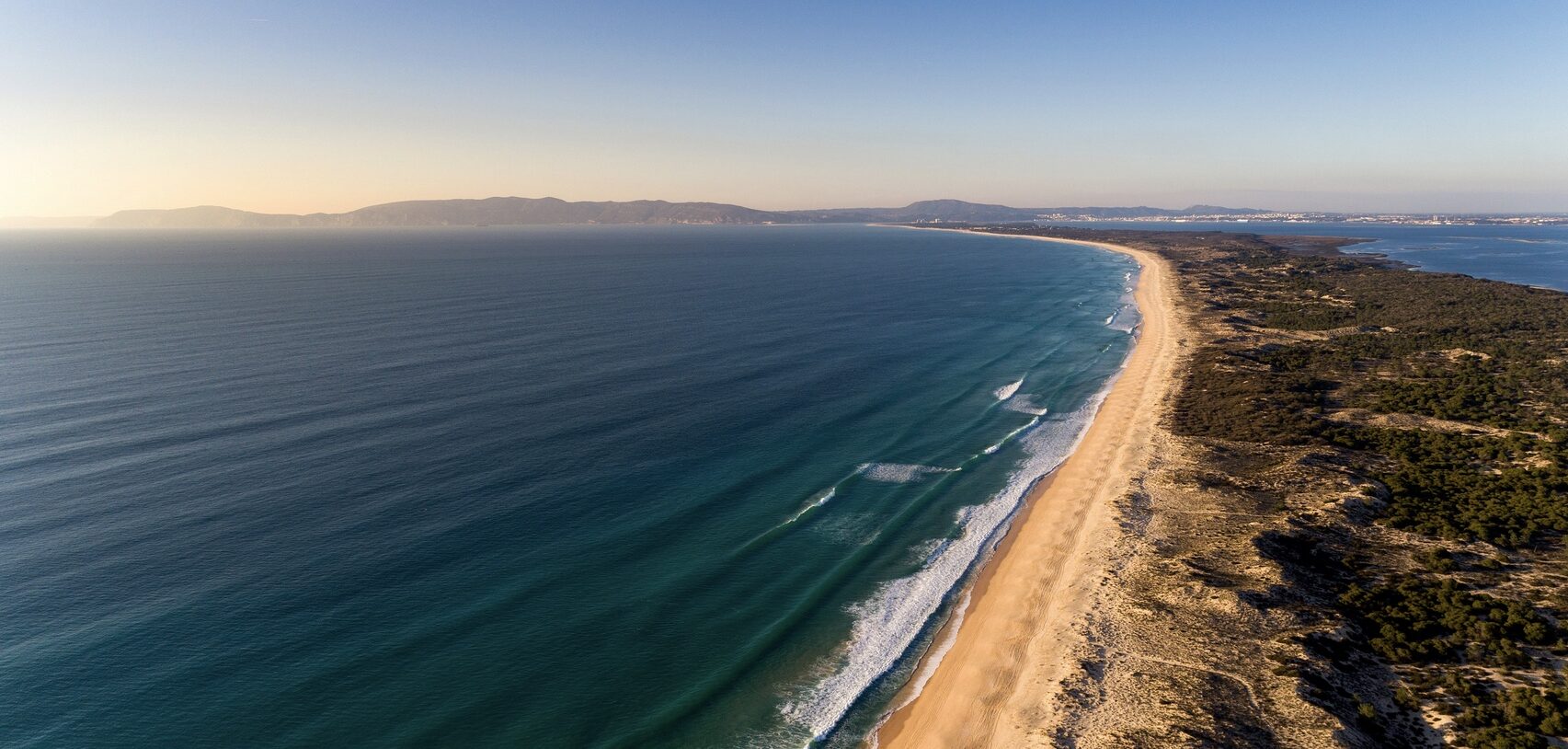
Comporta beach
Restaurants at Comporta beach
Unlike other touristic beach areas, you can actually eat really well in Comporta – at the beach itself and, particularly, in the heart of the village which lends its name to the beach area. For petiscos and an informal meal, we like going to Gomes – Casa de Vinhos e Petiscos (Largo Luis de Camões), where you can snack on good cheeses and charcuterie as you share a bottle of local wine, but also enjoy local specialities such as seafood based dishes and other traditional Portuguese comfort recipes.
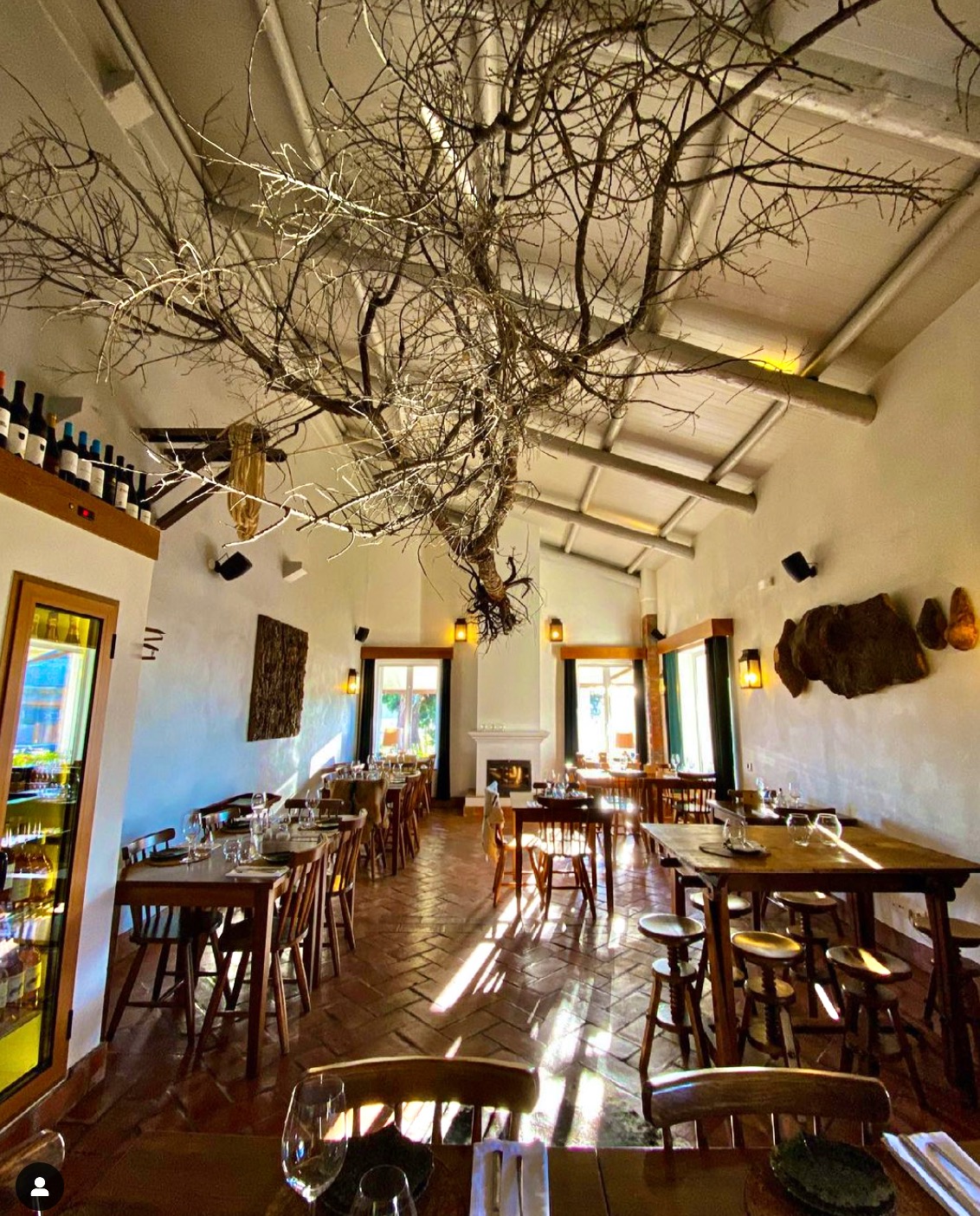
Gomes – Casa de Vinhos e Petiscos (© Gomes – Casa de Vinhos e Petiscos)
Dona Bia (Estr. Nacional 261), right by the roadside, is incredibly popular with Portuguese folks who know that, very often, the best restaurants just don’t happen to be in the most premium locations. This is the kind of place where you come for fried fish with rich rices such as those flavored with tomatoes, coriander (arroz de coentros) or cockles (arroz de berbigão). Comporta is in Portugal’s most prolific rice production region and so rice dishes are prepared with the local Carolino variety of rice grain (similar to Arborio in Italy or Bomba in Spain, starchy varieties ideal to absorb liquid and make brothy and creamy rice recipes) abound around here.
For fresh fish, Retiro do Pescador (Avenida dos Pescadores, Carrasqueira) and Pica Peixe (Av. 18 de Dezembro 21A, Carvalhal) are classics for a reason. For Portuguese food with a twist, the relatively new-comer Bago (Lagoa da Travessa, Lote 15 Carvalhal) is also a safe bet, and so is Cavalariça Comporta (Rua do Secador 9), one of the most sought after addresses by those in the know, for a meal out in Comporta.
Comporta beach bars
Because one can’t speak of Comporta and simply ignore the beach bars that have contributed to popularize this area, we must also mention that Sal (Alameda da Praia do Carvalhal) was voted by the readers of Condé Nast Traveler as the best beach bar in the word. If you agree with us that cocktails and the ultra Portuguese Bulhão Pato style clams can be an unlikely but very good combo, you might want to check Sal out!
If you’d like to spend the night in Comporta, you ought to have a budget to match as most accommodations around here tend to be on the higher end side. But, if you can afford it, be rest assured that places such as the contemporary and trendy Sublime Comporta (EN 261-1 Muda), the literally “feet in the sand” Casas na Areia (Sítio da Carrasqueira), or the eco-chic Cocoon Eco Design Lodges, certainly offer unique high standard experiences.
Alcácer do Sal: a historic city with Moorish influences
If lazing at the beach doesn’t sound like your ideal day out, we’d recommend heading towards Alcácer do Sal, a historical town by the banks of the Sado river. Even though Alcácer do Sal was already inhabited by Neolithic times, it was of great importance during the days of the Roman empire and, centuries after, during the days the Moorish from northern Africa ruled Portugal. It was during the Arab dominated days that Alcácer do Sal became an important commercial town, as its proximity to the river contributed for it to become an important port from which to transport the local products, mainly wheat, olive oil and wine. In fact, the name Alcácer do Sal comes from the Arabic qasr, which means castle, and Portuguese do sal, which stands for “of salt”. This “castle of salt” refers to the prolific salt mines in the area which contributed to the fish preservation activities back in the day.
Restaurants in Alcácer do Sal
Today, Alcácer do Sal is worth visiting to admire the stunning architecture, to walk its picturesque cobblestone streets, to chill at one of the nearby river beaches or, you knew it was coming: to go for a meal at one of its restaurants! Some of the best restaurants in Alcácer do Sal include Estrela do Sado (Avenida dos Aviadores 12), a no-frills establishment with consistently good food; O Cantinho da Ribeira Velha (Largo da Ribeira Velha 7), a family style eatery with traditional dishes; or Porto Santana, also known as Tasca do Gino (Senhora Satana), where they serve an açorda (typical savory bread porridge from the Alentejo region) with roe (ovas) which is to die for!

Carrasqueira is famous for its port on stilts, with old wooden mooring lines for the local fishing boats.
If you happen to travel to Alcácer do Sal during the month of May, definitely check out Rota do Arroz, which means rice route, and is an initiative which highlights establishments worth eating out at in Portugal’s main rice producing region, while promoting native products and contributing to keeping local culinary traditions alive.
Fishermen village
When you visit Alcácer to Sal and you’d still like to go check out the natural beauty around Comporta, we recommend also hoping to Carrasqueira, a super traditional tiny village with small houses and shacks on stilts, where fishermen used to store their equipment, connected by picturesque wooden walk-ways. Cais Palafítico da Carrasqueira is, hands down, one of the most unique villages in this area, and it can easily be visited on the route to/from Alcácer do Sal or even Comporta.
You can stay in this paradise overnight at Alma da Comporta houses where Charline and Antoine decided to build their houses project: Campo de Arroz, Casas de Arroz and Flor de Arroz an homage to the traditional homes of Carrasqueira. The infinity pools overlook Comporta’s rice fields and meadows. As they say “It is the best place to enjoy the “slow life” spirit of Comporta”.
Grândola: the Portuguese village that echoes freedom…
The cuisine of the Alentejo
Grândola, a part of the district of Setúbal, is an ideal place to sample the famed cuisine of the Alentejo, without traveling too far from Lisbon. The style of cooking you’ll find here is quite particular, as its Alentejano in essence, but heavily influenced by the Atlantic ocean. That translates into abundant fresh fish (customarily grilled or fried), but also a typical garlic and coriander infused broth served over slices of rustic bread and topped with protein such as a poached egg or a fish filet and, when in season, even wild purslane (açorda de beldroegas).
To simple regional cuisine in Grândola, we’d recommend A Talha de Azeite (Rua Dom Nuno Álvares Pereira 17), which has a homely feel and serves the kind of dishes a stereotypical grandma from the Alentejo would cook for you right at home. At Taberna d´Vila (Largo de São Sebastião), food from the Alentejo is reinterpreted in a more contemporary way, also worth checking out.
Much more than food !
If you are by now thinking Grândola is all about food, allow us to mention that this charming town certainly has more to offer than that! For most Portuguese, Grândola echoes freedom, as the song “Grândola Vila Morena” by singer-songwriter Zeca Afonso played on the radio as the carnation revolution which marked the end of the fascist regime in our country back in the 25th of April of 1974 started taking place. As such, the 25th of April memorial in Grândola is a reference for the Portuguese, and you’ll find that many travel here during the holiday of April.
For mountain vibes you can spend some time at Serra de Grândola, while for beaches you shouldn’t definitely miss Melides, which CN Traveler recently wrote about, stressing that this is “the secret Portuguese beach spot to know”! If you do make it to Melides, make sure you stop by restaurant O Melidense (EN261-2 11) and ask for a serving of tomatada, which is the Alentejo equivalent of Israeli shakshuka.
Grândola’s municipal library (Rua Dr. José Pereira Barradas) is also worth a stop, not necessarily for book worms as such, but for architecture lovers. The town’s library is located in the very heart of the city, in between lush public gardens, and not only has beautiful architecture, it usually has a busy program of events and exhibitions that prove Grândola is alive and well from a cultural standpoint too.
Sesimbra: don’t go here on the same day as Setúbal!
 Technically also a part of the Setúbal district, we feel that Sesimbra has so much to offer that it should be visited in its own themed trip, and certainly not as a side stop during a day dedicated to the city of Setúbal. In fact, even though both places are connected by geo-political structures and even have in common their close relationship to the sea, these two destinations are quite different!
Technically also a part of the Setúbal district, we feel that Sesimbra has so much to offer that it should be visited in its own themed trip, and certainly not as a side stop during a day dedicated to the city of Setúbal. In fact, even though both places are connected by geo-political structures and even have in common their close relationship to the sea, these two destinations are quite different!
White Setúbal has an industrial past which can still be felt today, Sesimbra is a resort town which historically many Lisbon locals would flock to to enjoy the beach and, of course, the seafood.
We don’t mean to cover much about Sesimbra here today but, if you happen to head in that direction, we can’t help but endorse a couple of restaurants. At O Zagaia (Rua Dr. Peixoto Correia 33) you can skip the fried cuttlefish strips you would have probably already tried in Setúbal city, and go for the cuttlefish croquetes with black garlic mayo, or the scarlet shrimp and seaweed rice. At Lobo do Mar (Av. dos Náufragos) you can have straightforward but very well executed charcoal grills of fish you get to select yourself from the covered counter they’re exhibited at. Let your sense of smell guide you to Tasca do Isaías (Rua Cel. Barreto 2), where the outdoor grill makes sure good ol’ marketing ends up happening, as filets of black scabbardfish get nicely charred.
Arrábida Natural park
While some of the destinations we write about above (such as several of the beaches) are technically a part of the Parque Natural da Arrábida, we still wanted to dedicate a few lines to this protected area, which active travelers will particularly find inviting.
The hills of Arrábida are highly coveted by those into trekking surrounded by dramatic scenery. Keep in mind that it does get pretty hot during the summer months and shade is not guaranteed around here, so you are more likely to enjoy a day out in Arrábida in shoulder seasons such as Spring and Autumn. That being said, there’s plenty to do in this protected area. From the aforementioned trekking (explore the 35 walking trails of Arrábida here), to mountain climbing, costereeing, snorkeling, canoeing and speleology, that is, cave exploration.
If this sounds like too much action for you, know that you can also drive through parts of the Arrábida Natural Park enjoying the scenic views around, of book yourself for a quiet stay in one of the accommodations within the park, which are rustic in essence, but tend to be on the medium-higher end budget wise.
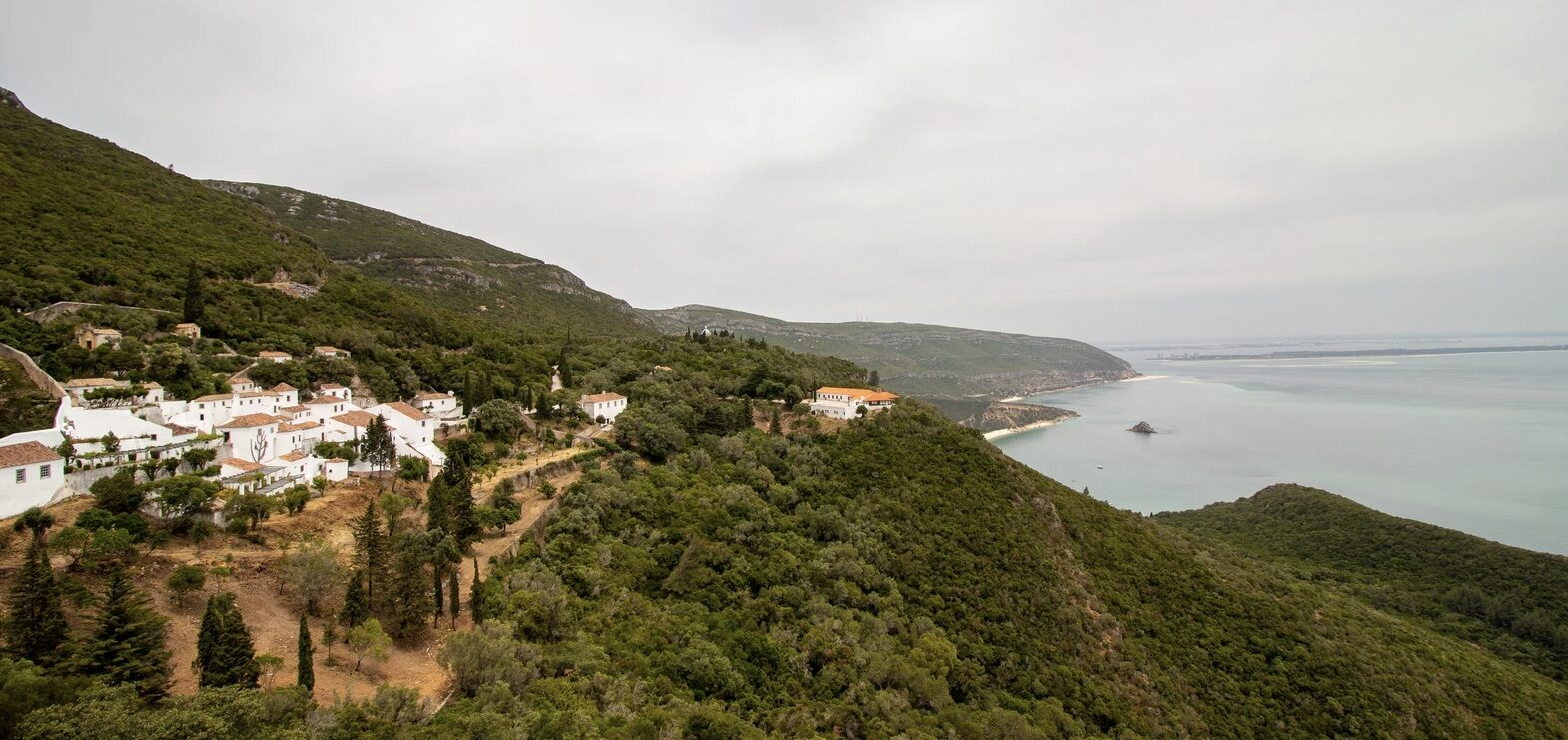
Arrabida convent and bay
Article by :
Zara Quiroga (freelance food writer and food & cultural leader at Oh! My Cod Pico Trips)
Want to more about Portuguese cuisine and its influences?
Fish (r)evolution: from the Roman times to contemporary Portuguese Chefs
How Portugal influenced Indian cuisine
Alentejo and Algarve: culinary traditions of the South of Portugal
10 Portuguese Codfish recipes step-by-step
Setúbal: a day trip from Lisbon filled with history, culture and incredible cuisine

